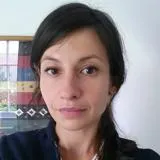Please note: this event has passed
Soon after decolonization and constituting a democratically elected body, Goan leaders faced a linguistic crisis in the early 1960s. Of the many languages that were spoken and written in the territory, which was to be that one language in which the business of the House be conducted? Indeed, which was the one language that was the ‘official’ and ‘mother tongue’ in Goa?
This question had two main proponents, mutually opposed to each other: the Maharashtrawadi Gomantak Party (MGP) which had captured power in the most stunning fashion upsetting Nehru’s Indian National Congress, on the one side; and on the other, the Opposition in the form of the United Goans Party (UGP).
The MGP was staunchly in favor of Marathi as the official language of Goa, believing that it was the ‘mother tongue’ of Goans. The UGP opposed this belief tooth and nail, instead arguing that Konkani is the natural language of Goa and Goans.
This paper looks at the very first interactions of the Ruling and Opposition members of the first democratically elected Legislative Assembly of Goa, Daman, and Diu to suggest that ‘languages’ in the plural, and not ‘language’ fueled politics soon after decolonization.
The paper looks closely at the rhetoric around official language and mother tongue—a large part of that rhetoric was based the emotion of language as ‘mother’ and as the means of ‘belongingness’ under the Union of India. Finally, it advances some broad propositions for the study of Goan politics after decolonization in 1961.
About the speakers
Dale Luis Menezes is a Ph.D. student in the history program at Georgetown University. A Georgetown Early Modern World Fellow, his research interests include the history of commodities and imperial and non-imperial polities in Early Modern South Asia. Menezes is interested in the role of South Asians—kings, merchants and laborers—in the making of a global world (or ‘globalizing world’, as he likes to think of it) since the 1500s.
His research straddles the European and non-European spheres of South Asia’s globalizing history and tries to view these seemingly different components as forming a part of the same political economy. As a result, he happily spends a lot of time reading about Europe, Latin America, and more recently, Africa.

